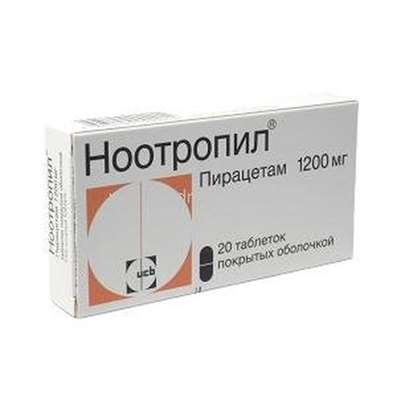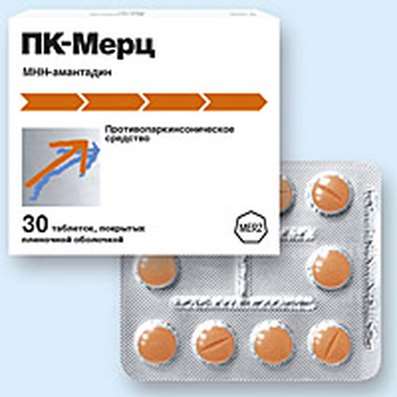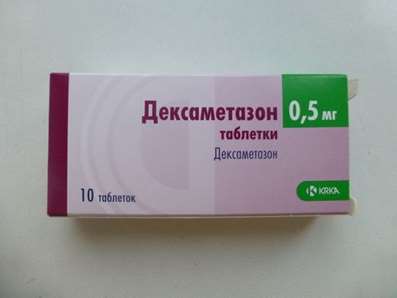Instruction for use: Nebido
I want this, give me price
Active substance:
Testosterone [mixture of esters]
ATX code
G03BA03 Testosterone
Pharmacological group
Androgens, antiandrogens
Nosological classification (ICD-10)
E23.0 Hypopituitarism
Kalmann's syndrome, Infantilism pituitary, Dwarfism is cerebral-pituitary, Cachexia pituitary, Cachexia diencephalo-pituitary, Anovulatory disorders, Symmonds disease, Secondary hypogonadism in men, Secondary hypogonadotropic hypogonadism, Hypogenitalism, Hypogonadism, Hypogonadism hypogonadotropic, Hypogonadism of the pituitary, Hypogonadism in men, Hypogonadotropic hypogonadism, Hypopituitarism, Pituitary insufficiency, Lack of growth in children with hypopituitarism, Pangypopituitarism, Primary hypogonadism, Primary hypogonadotropic hypogonadism, Shihan Syndrome, Shihina's Syndrome, Symmonds-Glinsky disease, Laron's dwarfism, Sheena's Syndrome, Syndrome of a fertile eunuch
E29.1 Testicular function
Leydig cell aplasia, Hypogonadism testicular (primary), Androgen deficiency, Eunuchism, Insufficiency androgenic, Reduced function of the sex glands, Androgen insufficiency, Insufficiency of testosterone, Hypoplasia of the testes, Hypofunction of gonads in men, Insufficiency of androgens in men, Insufficiency of Leydig cells
Composition
Solution for intramuscular injection 1 amp. (Fl.) 4 ml
active substance:
Testosterone undecanoate 1000.0 mg
Auxiliary substances: benzyl benzoate - 2000.0 mg; Castor oil purified for parenteral administration - 1180.0 mg
Description of dosage form
Transparent oil solution with a yellowish tinge.
pharmachologic effect
The pharmacological action is androgenic.
Pharmacodynamics
Testosterone undecanoate is an ester of natural androgen, testosterone. The active form, testosterone, is formed as a result of the cleavage of the side chain.
Testosterone is the most important androgen in the male body and is synthesized, mainly in testicles and, to a lesser extent, in the adrenal cortex.
Testosterone is responsible for the formation of masculine characteristics during fetal development, in early childhood, as well as during puberty, and subsequently for maintaining the male phenotype and androgen dependent functions (eg spermatogenesis, sex glands). Insufficient secretion of testosterone leads to male hypogonadism, which is characterized by low concentrations of testosterone in the serum. Symptoms associated with male hypogonadism include, but are not limited to, erectile dysfunction, decreased sexual desire, fatigue, depressed moods, lack, underdevelopment or regression of secondary sexual characteristics, and an increased risk of osteoporosis. Exogenous androgens are prescribed to increase inadequate levels of endogenous testosterone and reduce symptoms of hypogonadism.
Depending on the target organ, the nature of testosterone is mainly androgenic (for example, the prostate gland, seminal vesicles, epididymis) or protein-anabolic (muscle, bone, hematopoietic system, kidney, liver).
The actions of testosterone in some organs are manifested after the peripheral conversion of testosterone to estradiol, which then binds to estrogen receptors in the nuclei of target cells (for example, the pituitary, adipose tissue, brain, bones and testicular leidig cells).
In men suffering from hypogonadism, the use of androgens reduces the body fat mass, increases the body's lean body mass, and also prevents the loss of bone tissue. Androgens can improve sexual function, and also have a positive psychotropic effect by improving mood.
Pharmacokinetics
Suction. NebidoŽ is an intramuscular depot preparation containing testosterone undecanoate. For this reason, the effect of the first passage is absent. After an injection of an oil solution of testosterone undecanoate, it is gradually released from the depot and is almost completely cleaved by serum esterases to testosterone and undecanoic acid. The increase in serum testosterone concentrations relative to baseline values can be determined as early as the day after the injection.
Distribution. In two separate studies, mean Cmax testosterone values of 24 and 45 nmol / L were determined, respectively, 14 and 7 days after a single IM injection of 1000 mg of testosterone undecanoate to men suffering from hypogonadism. Postmaximum testosterone levels declined, with T1 / 2 being approximately 53 days.
About 98% of circulating testosterone binds in the blood serum with globulin, binding sex steroids, and albumin. Only the free fraction of testosterone is considered biologically active. After iv introduction of testosterone to older men, the apparent Vd was determined at a level of approximately 1 l / kg.
Metabolism. Testosterone, formed from testosterone undecanoate as a result of cleavage of the ester bond, is metabolized and excreted from the body in the same ways as endogenous testosterone. Undecanoic acid is metabolized by β-oxidation in the same way as other aliphatic carboxylic acids.
Excretion. Testosterone is significantly metabolized in the liver and beyond. After the administration of labeled testosterone, about 90% of the radioactivity is detected in the urine as glucuronide and sulfate acid conjugates, and 6% after passage of the enterohepatic circulation is found in feces. Urine-specific foods include androsterone and etiocholanolone.
Equilibrium concentration. After repeated injections of 1000 mg of testosterone undecanoate to men suffering from hypogonadism, with an interval between injections of 10 weeks, the equilibrium concentration was reached between the 3rd and 5th injections. The mean Cmax and Cmin values of testosterone in the equilibrium state were about 42 and 17 nmol / L, respectively. Post-maximal serum testosterone levels were reduced with T1 / 2, approximately 90 days, which corresponds to the release rate of the substance from the depot.
Indications
Insufficiency of testosterone in primary and secondary hypogonadism in men (testosterone replacement therapy).
Contraindications
Hypersensitivity to the active substance or to any of the auxiliary components of the drug;
Presence of androgen-dependent carcinoma of the prostate or mammary glands in men;
Hypercalcemia associated with malignant tumors;
A liver tumor at present or in an anamnesis.
NebidoŽ should not be used in women.
CAREFULLY
Patients with apnea syndrome.
Side effects
Most often in the treatment of NebidoŽ, there were undesirable effects such as acne and pain at the injection site.
The following data show the adverse reactions (NR) that have occurred with the use of NebidoŽ, grouped according to the classes of organ systems in accordance with MEdDRA terminology. The incidence of HP is determined from clinical trials and is classified as follows: often (from ≥1 / 100 to <1/10) and infrequently (from ≥1 / 1000 to <1/100).
Undesirable reactions were recorded during 6 clinical trials (422 patients in total). Their connection with NebidoŽ is considered, at least, possible.
On the part of the blood and lymphatic system: often - polycythemia; Infrequently - an increase in hematocrit, an increase in the number of red blood cells, an increase in the level of hemoglobin.
From the immune system: infrequently - hypersensitivity.
From the side of metabolism and nutrition: often - weight gain; Infrequent - increased appetite, increased levels of glycosylated hemoglobin, hypercholesterolemia, increased triglycerides in the blood, increased cholesterol levels in the blood.
Disorders of the psyche: infrequently - depression, emotional disturbances, insomnia, anxiety, aggressiveness, irritability.
From the nervous system: infrequently - headache, migraine, tremor.
From the CCC: often - tides; Infrequently - a violation of the function of SSS, hypertension, increased blood pressure, dizziness.
From the respiratory system, chest and mediastinum: infrequently - bronchitis, sinusitis, cough, shortness of breath, snoring, dysphonia.
From the digestive tract: infrequently - diarrhea, nausea.
From the liver and biliary tract: infrequent - deviations in the "liver" tests, increasing the activity of AST.
From the skin and subcutaneous tissues: often - acne; Infrequently - alopecia, erythema, rash, papular rash, itching, dry skin.
From the musculoskeletal and connective tissue: infrequently - arthralgia, pain in the extremities, muscle spasms, muscle tension, myalgia, musculoskeletal rigidity, increased activity of CK in the blood.
From the side of the kidneys and urinary tract: infrequently - a decrease in the volume of excreted urine, urinary retention, impaired urinary tract function, nocturia, dysuria.
From the genitals and mammary glands: often - increased levels of prostate-specific antigen, pathological results of examination of the prostate, benign prostatic hyperplasia; Infrequently, intraepithelial neoplasia of the prostate, prostate enlargement, prostatitis, impaired prostatic function, increased libido, decreased libido, testicular pain, breast pain, mammary gland tightening, gynecomastia, increased estradiol level, increased free testosterone level in the blood , Increased testosterone levels in the blood.
General disorders and disorders at the injection site: often - various types of reactions at the site of administration (pain, discomfort, itching, swelling, bruising, irritation at the injection site); Infrequently - increased fatigue, asthenia, hyperhidrosis, night sweats.
The pulmonary embolism of the pulmonary artery with oil solutions can rarely lead to the appearance of a number of signs and symptoms, such as coughing, shortness of breath, malaise, hyperhidrosis, chest pain, dizziness, paresthesia or fainting. These reactions can develop during or immediately after injection and are reversible. In the course of clinical trials, as well as in the postmarketing period, cases of pulmonary micro-embolism of the pulmonary artery rarely occurred (≥1 / 10000 and <1/1000 injections) (see "Special instructions").
There are reports of anaphylactic reactions after NebidoŽ injections.
Along with the above undesirable reactions against the background of treatment with testosterone-containing drugs, nervousness, aggression, sleep apnea, various skin reactions (including seborrhea), increased erections, as well as single cases of jaundice development have been reported.
Therapy with drugs with a high content of testosterone usually causes a reversible cessation or a decrease in spermatogenesis, which leads to a decrease in the size of the testicles. Testosterone replacement therapy for hypogonadism in rare cases can cause persistent painful erections (priapism).
Prolonged or high-dose testosterone therapy can sometimes lead to increased frequency of fluid retention in the body and edema.
Interaction
Drugs affecting testosterone
Barbiturates and other inducers of enzymes. Possible interaction with drugs that induce microsomal enzymes (eg barbiturates), which can lead to an increase in testosterone clearance.
Influence of androgens on other drugs
Oxyphenbutazone. An increase in the concentration of oxyphenbutazone in serum was reported.
Oral anticoagulants. Testosterone and its derivatives may increase the activity of oral anticoagulants, which may lead to the need for dose adjustment. Regardless of this fact, as a general rule, restrictions should always be observed regarding intramuscular injections to patients with acquired or hereditary blood clotting disorders.
Hypoglycemic drugs. Androgens can enhance the hypoglycemic effect of insulin. It may be necessary to reduce the dose of a hypoglycemic drug.
Since compatibility studies have not been conducted, this drug should not be confused with other drugs.
Dosing and Administration
Injection of NebidoŽ (1 amp or fl containing 1000 mg of testosterone undecanoate) is performed once every 10-14 weeks. At this injection frequency, a sufficient level of testosterone is maintained, and no cumulation takes place.
The contents of the ampoule or vial should be injected immediately after opening. The injection should be done very slowly. NebidoŽ can only be administered strictly in / m. Care must be taken to ensure that the substance to be introduced does not enter the vessel.
The beginning of treatment. Before the start of treatment should determine the amount of testosterone in the blood serum. The first interval between injections can be reduced, but it should be at least 6 weeks. Css at this dose is achieved quickly.
Individual adjustment of treatment. At the end of the interval between injections, it is recommended to measure testosterone concentration in serum. If its concentration is lower than normal, this may indicate a need to reduce the interval between injections. At high concentrations, the feasibility of increasing this interval should be considered. The interval between injections should remain within the recommended range of 10-14 weeks.
Special categories of patients
Children and teenagers. NebidoŽ is not intended for use in children and adolescents, as it has not been clinically tested in men under the age of 18 (see "Special instructions").
Patients of advanced age. Available limited data do not indicate the need for dose adjustment in elderly patients (see "Special instructions").
Patients with impaired liver function. There have been no official studies in patients with impaired liver function. The use of NebidoŽ is contraindicated in men with liver tumors currently or in an anamnesis (see Contraindications).
Patients with renal insufficiency. There have been no official studies in patients with renal insufficiency.
Overdose
No special therapeutic measures, except for a temporary cessation of therapy or a reduction in the dose of the drug, are not required in case of an overdose.
special instructions
When using androgens for the treatment of elderly patients, the risk of developing hyperplasia of the prostate can increase. Despite the lack of evidence that androgens can indeed cause prostatic carcinoma, they can contribute to the growth of an already existing carcinoma. Therefore, before starting treatment with drugs containing testosterone, it should be excluded prostatic carcinoma. As a preventive measure, regular examinations of the prostate gland are recommended.
In patients who are on prolonged therapy with androgens, it is recommended to periodically check hemoglobin and hematocrit to identify cases of polycythemia (see "Side effects").
Against the background of the use of sex steroids, which include testosterone, in rare cases, benign and, more rarely, malignant liver tumors that can lead to intra-abdominal hemorrhage. If a man who uses NebidoŽ has severe pain in the upper abdomen, a liver is enlarged, or there are signs of intra-abdominal bleeding, then the probability of a liver tumor should be taken into account in differential diagnosis.
Caution should be exercised in patients prone to swelling, since androgen therapy may delay the excretion of sodium ions (see "Side effects").
Clinical studies of NebidoŽ involving children or adolescents under the age of 18 have not been carried out to date.
The use of testosterone for the treatment of children, along with masculinization, can cause the growth and maturation of bone tissue to accelerate, as well as premature closure of the epiphyseal growth zone, which will result in a decrease in the final growth.
Perhaps the appearance of common acne.
The existing sleep apnea syndrome may worsen.
Androgens are not used to enhance muscle development in healthy subjects, nor to increase physical ability.
Like all oily solutions, NebidoŽ should be injected / m and very slowly, in order to avoid pulmonary artery pulmonary embolism with an oil solution of the drug and which can manifest as symptoms such as coughing, shortness of breath, malaise, hyperhidrosis, chest pain, dizziness, paresthesia or fainting. These reactions can develop during or immediately after injection and are reversible. Treatment, as a rule, supporting, for example, the introduction of additional oxygen.
There are reports of anaphylactic reactions after NebidoŽ injections.
Fertility. Substitution therapy with testosterone can reversibly reduce spermatogenesis (see "Side effects").
Safety data obtained from preclinical studies. The use of NebidoŽ can lead to virilization of the female fetus at some stages of development. However, the results of studies for embryotoxic and, in particular, teratogenic effects, do not indicate the likelihood of an additional deterioration in organ development.
Impact on the ability to drive vehicles and moving machinery. NebidoŽ does not affect the ability to drive and drive vehicles that require increased attention.
Form of issue
Solution for intramuscular injection, 250 mg / ml.
Ampoules. For 4 ml of the drug in a ampoule of amber glass type I.
Bottles. For 4 ml of the drug in a bottle of dark glass type I, with a rubber stopper, coated with an aluminum cap with a plastic lid.
For 1 amp. Or f. Placed in a cardboard box with a pasteboard holder.
Terms of leave from pharmacies
On prescription.
storage Conditions
At a temperature not exceeding 25 ° C.
Keep out of the reach of children.
Shelf life
5 years.
Do not use after the expiry date printed on the package.

 Cart
Cart





